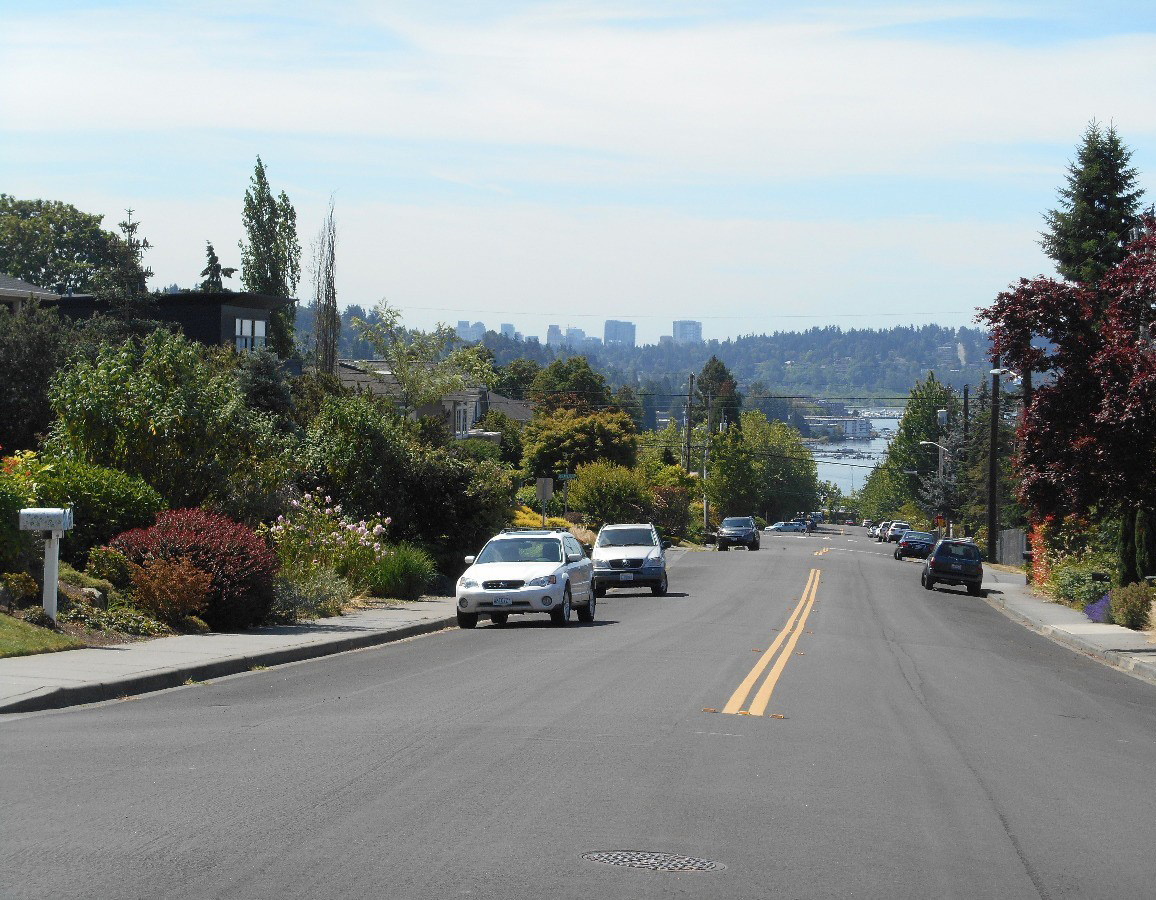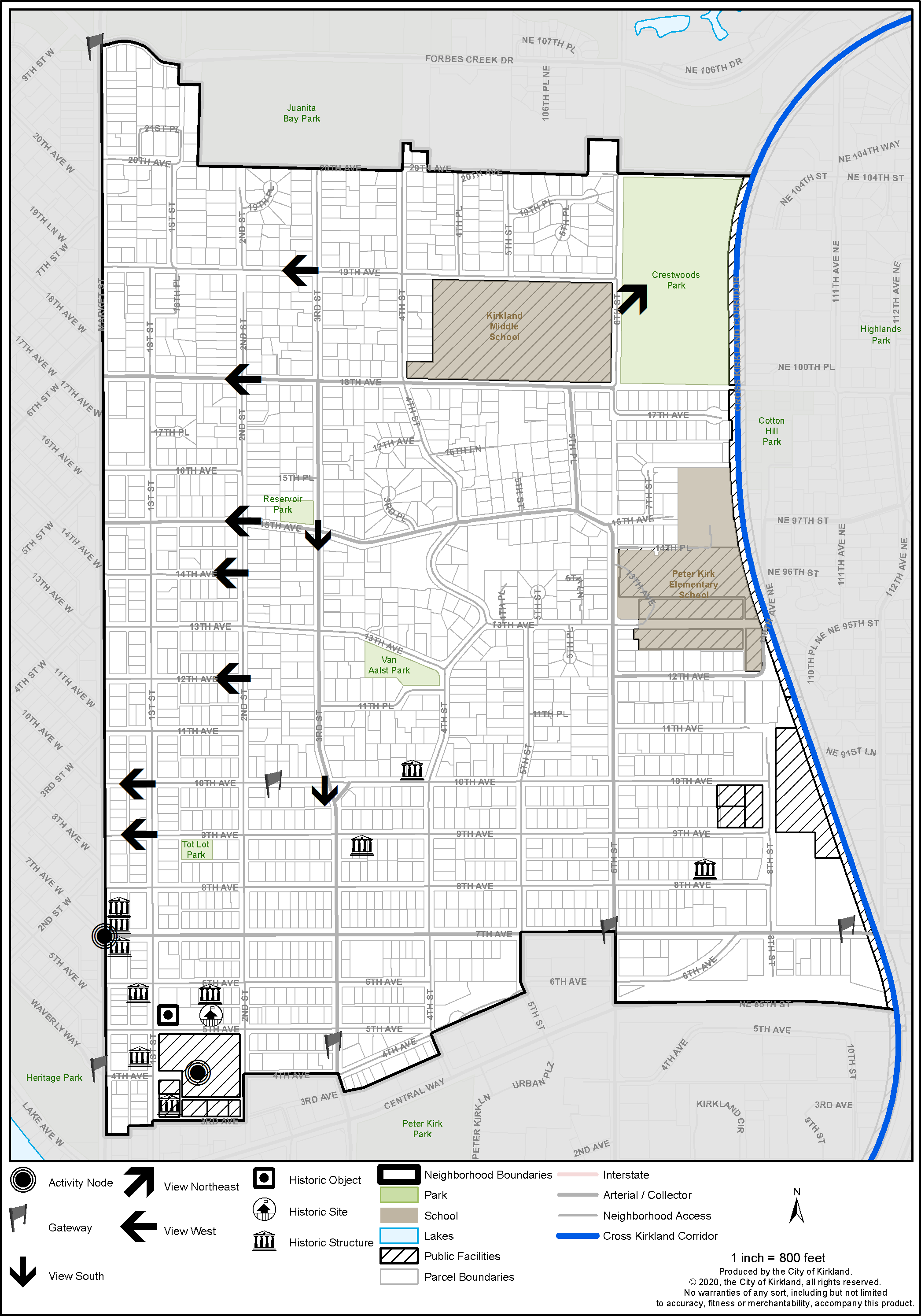6. URBAN DESIGN
Policy N-24:
Promote shared parking arrangements to encourage efficient utilization of surface parking lots in the neighborhood.
Throughout the neighborhood are surface parking lots owned by the City, other public entities, or nonprofit organizations that may be underutilized during the week. Shared parking agreements between properties, businesses, and community organizations could be arranged to make better use of these facilities.
Policy N-25:
Address transition impacts and protect nearby lower-intensity residential character with site and building development regulations for the industrial area, Planned Area 7, and the Market Street Corridor.
The building mass and/or height of higher density structures should complement rather than dominate or overwhelm adjoining lower-intensity uses. Landscape buffers are used to soften and separate uses by creating a transition zone. In addition, the building mass and height of higher density structures should be designed appropriately to prevent overwhelming adjoining low-density uses.
Policy N-26:
Provide streetscape, gateway and public art improvements that contribute to a sense of neighborhood identity and enhanced visual quality.
An existing gateway sign is located on 6th Street north of 7th Avenue. Other desired locations are shown in Figure N-7. The City should pursue opportunities to work with private property owners to install gateway features as part of future development. In other instances, public investment will be necessary. Depending on the location, improvements such as landscaping, signs, public art, structures, or other features that identify the neighborhood could be included.
View from intersection at 9th Avenue and 1st Street
Policy N-27:
Preserve the public view corridors of Lake Washington, Seattle, and the Olympic Mountains from 1st, 2nd and 3rd Streets (Figure N-4).
The street system provides Kirkland neighborhoods with several local and regional views. View corridors located within the public domain are valuable for the beauty, sense of orientation, and identity that they impart to neighborhoods. The Norkirk public view corridors should be preserved and enhanced for the enjoyment of all residents. One means of doing this may be the undergrounding of utilities.
Policy N-28:
Encourage design that contributes to a vibrant neighborhood.
Building and site design should respond to both the conditions of the site and the surrounding neighborhood. A variety of forms and materials result in homes with their own individual character, thus reducing monotony. Appropriate building setbacks, garage treatments, sidewalks, alley access, and architectural elements, such as entry porches, help foster a pedestrian orientation and encourage greater interaction between neighbors.
Policy N-29:
Explore new regulations that encourage infill housing to be compatible in scale and mass with the existing development and that allow for sufficient light, air, and privacy between residential structures.
Appropriate scale results in the perception that new housing structures are in proportion with their lots and provide adequate light, air and privacy between structures. Setbacks, building mass, lot coverage, landscaping and building height and roof pitch all contribute to housing structures that successfully fit into the neighborhood.
Figure N-4: Norkirk Urban Design Features



